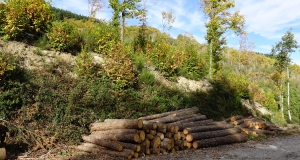Silviculture combines cutting trees with regeneration of the forest. Coppicing is a silvicultural practice ensuring regeneration by exploiting an ability of many species of trees which has been known since prehistoric times: they resprout thanks to dormant buds activated after a traumatic impact such as cutting them down.
After cutting, new stems grow from the stool, the basal part of the tree that remains near ground level. Given the great longevity of the stools, this natural process can last for many generations if the practice is repeated with care after a right number of years. Depending on the species and the diameters at breast height, the coppicing cycles vary from 15 to 35 years. Usually, when coppicing, some single or clustered trees (called standards) are left in order to provide different functions: nowadays the protection of biodiversity is a particularly important one.
The practice of coppicing is widespread, in particular throughout the Mediterranean basin. In Italy coppice woodlands are very common: they represent more than 40% of the woods. The typical products of coppicing are firewood and poles, which are important especially for the rural areas.












